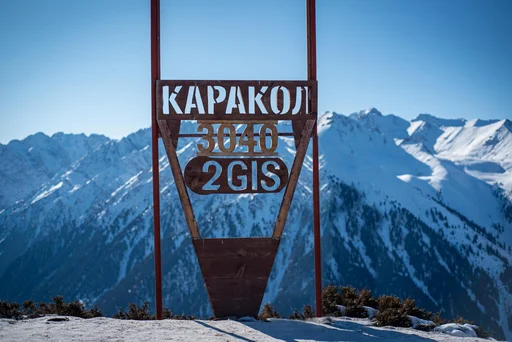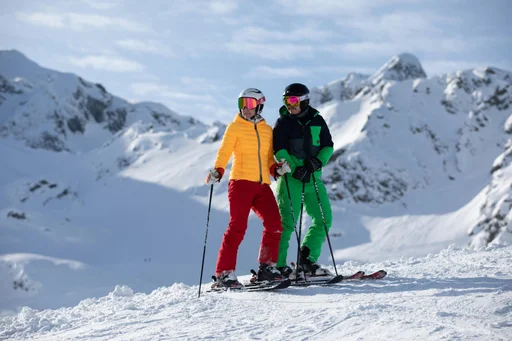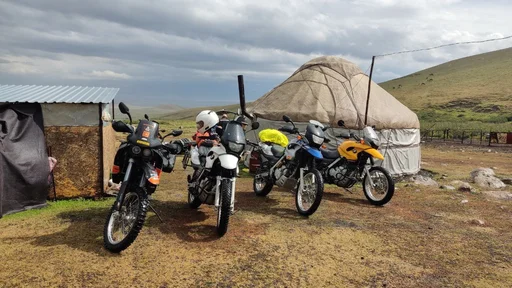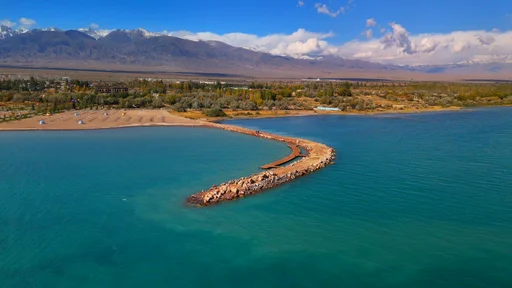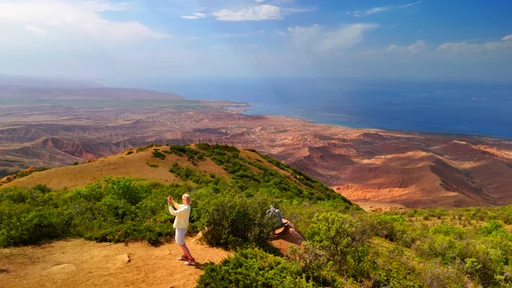Introduction. The right choice of equipment is the key to a safe and comfortable holiday at a ski resort. For beginners, it is especially important to select gear appropriate to their level, so that the first runs go smoothly and without injuries. Most beginners rent skis and boots, but it is essential to know how to choose the right size and type of equipment. In this article, we explain how to choose alpine skis and boots, why you need a helmet, balaclava, goggles, and sunscreen, and we also share several useful exercises to prepare for the season. All recommendations are based on expert advice and reputable sources.
Skis: type and length for beginners
Type of skis. For skiing on groomed slopes, beginners are best suited to all-mountain/piste skis - universal alpine skis designed for hard-packed snow. Such models are usually narrow at the waist (about 70-80 mm) and have a soft, flexible core. Narrower skis are easier to edge and provide good grip on groomed slopes, making them ideal for beginners. In addition, beginner skis usually have a soft camber and cap construction (a single-shell design), often made from composites or soft wood cores - these skis are more forgiving of mistakes and turn easily. A small rocker (tip and tail rise) is also helpful: it prevents edge catching and makes turn initiation easier.
Length of skis. The main guideline when choosing ski length is your height and skill level. For beginners, the skis should reach approximately the nose (15-20 cm shorter than your height). For example, if you are 170 cm tall, your first skis should be around 150-155 cm long. Shorter skis are easier to control and turn - this is critical for learning. A small deviation of ±3 cm from the recommended length is acceptable - it’s not a problem if the chosen model is slightly longer or shorter than optimal. Consider weight as well: lighter people can choose slightly shorter skis, while heavier skiers should go longer for stability. In general, the rule is simple: the less experience you have, the shorter the skis for better maneuverability.
Example: skis 10-15 cm shorter than your height with a waist of around 75 mm and a soft camber are perfect for beginners who plan to ski on pistes. They provide easy turn initiation and forgive technical errors, helping you progress faster.
Boots: comfort and proper size
Size and fit. Ski boots are perhaps the most important element of a beginner’s equipment. Ill-fitting boots can ruin your whole vacation, so pay close attention to fitting. Boot size is measured in centimeters (Mondopoint system) - this is the length of your foot from heel to toe. Measure your foot and choose the corresponding size: the boot should fit snugly, holding the heel firmly, but without painful pressure. The toes can slightly touch the boot’s front but shouldn’t be tightly pressed. Try new boots in the evening when your feet are a bit swollen - this accounts for expansion under load. Many experts advise beginners to go half a size up for comfort, but make sure your foot doesn’t slide or move inside. Break in new boots at home (wear them for 20-30 minutes for several evenings) before your trip to avoid blisters.
Flex index. Every boot has a flex index that indicates the stiffness of the plastic shell. Beginners should choose soft, forgiving boots that bend easily - typically with a flex of 60-80 for women and 70-90 for men. A softer boot allows beginners to shift weight forward and control skis easily without needing strong legs. Very stiff models (flex >100) are made for aggressive skiing and can prevent beginners from shifting weight properly. Choose soft, comfortable boots that you can slightly flex forward with your shins while standing in ski position.
Comfort and socks. The only thing that should be inside the boot is your foot in the right ski sock. Never wear two pairs of socks or tuck ski pants inside the boots! This is a common beginner mistake. Pants should be outside the boots, otherwise they bunch up and cause pressure points and pain. Use special high ski socks made of thin synthetics or wool: they provide the right foot glide, wick moisture, and retain warmth. Such socks prevent blisters and cold toes. If you feel pressure points or discomfort during fitting, ask for another model or use heat molding (many modern boots have thermoformable liners). Remember: warm, comfortable feet will allow you to ski longer and enjoy it more.
Ski poles: balance and proper length
Many beginners underestimate the role of ski poles, but they are essential for maintaining balance and pushing on flat sections. Poles are chosen according to height: the classic method is to turn the pole upside down and hold it under the basket; your forearm should be roughly horizontal, with your elbow at about a 90° angle. Another rule of thumb: pole length ≈ 0.7 × your height (for example, at 170 cm tall, poles around 120 cm are suitable). Poles have a plastic basket at the bottom to prevent sinking into the snow. Handles and straps should be comfortable and non-slip. Don’t skimp: quality lightweight poles with ergonomic grips make movement coordination easier and reduce strain on your arms.
Beginners should learn to use poles properly: insert your hand through the strap from below and grab it together with the handle - this way, the pole won’t fly off when you fall. At first, poles help you balance while standing or walking, but on gentle slopes focus on your legs instead of poking the poles forward. Still, well-fitted poles are an important part of the gear even for beginners - they teach correct stance and balance during turns.
Helmet: safety first
Does a beginner need a helmet? Absolutely yes. Today almost all skiers - from beginners to professionals - wear helmets. This has become the norm since a helmet can save your life and prevent serious head injuries during falls or collisions. For beginners, the likelihood of falling is quite high, so head protection is essential. Plus, the helmet is warm, protecting the head and ears from cold and wind - important during fast descents or bad weather.
Choosing a helmet. Ski helmets are specifically designed to provide repeated protection against impacts with hard snow, ice, or even trees. They usually have a solid outer shell and an energy-absorbing layer. Don’t try to replace them with a bike or skate helmet - those are built for different impacts and won’t offer proper protection on the mountain. When choosing a helmet, check for safety certifications (e.g., CE EN 1077), and make sure it fits snugly and comfortably: it shouldn’t wobble when you shake your head, but it shouldn’t press too hard either. Many models have an adjustable fit system - a rear dial for size adjustment. Ventilation holes (that can open/close) and removable warm ear pads are also useful. When fitting, wear your balaclava or buff if you plan to use one to check the fit. A properly fastened chin strap should let you open your mouth but not allow the helmet to slip over your head.
Remember: the helmet is your most important protector on the slope. Even at low speeds, hitting your head on hard snow or ice can cause a concussion, while a helmet greatly reduces this risk. Don’t hesitate to wear one - it’s the standard of ski culture today.
Balaclava and face protection from the cold
What is a balaclava? A ski balaclava is a thin under-helmet mask or hood covering the head, neck, and most of the face. Usually, only the eyes (and sometimes the mouth and nose) are left open. The balaclava is worn under the helmet and protects from cold, wind, and snow. On mountain slopes, the face is constantly exposed to icy wind, and temperatures on summits are much lower - under such conditions, exposed ears, cheeks, and neck freeze quickly. The balaclava solves this problem by covering vulnerable skin areas, preventing frostbite and discomfort. It also provides extra UV protection at high altitudes by shielding the face from sunlight.
Why does a beginner need it? Many beginners ski in mild weather and think a balaclava isn’t necessary. But experience shows that it’s an essential accessory in cold weather. It keeps your head warm, retains body heat, and absorbs sweat, helping maintain optimal temperature balance. The breathable material wicks moisture, keeping your face dry even during active skiing, reducing the risk of catching cold. In addition, a balaclava prevents goggle fogging - by covering the skin, it directs warm breath downward, while special mesh zones around the mouth/nose let air out, minimizing condensation.
How to choose a balaclava. There are many types: from lightweight fleece “tubes” (buffs) to technical windproof masks. For beginners skiing in mild conditions, a thin fleece or knit balaclava that provides warmth and ventilation is ideal. In severe frost and wind, choose models made of windstopper or neoprene - they completely block wind and retain heat even in extreme conditions. Make sure the balaclava fits well under the helmet, without folds or pressure on the forehead. Flat seams and perforation around the mouth/nose area are desirable for easy breathing. Remember hygiene: the balaclava is in close contact with facial skin and absorbs sweat, so it’s better to have your own rather than rent one.
A balaclava greatly increases comfort when skiing in cold mountains. It protects your face from windburn, frost, and sun, keeping you warm and dry under the helmet. Even if it’s warm during the day, mountain weather can change quickly - it’s always better to have a balaclava or at least a buff with you. It’s a small and lightweight accessory that can save you from hypothermia and make skiing much more enjoyable.
Ski goggles and sunglasses
Why protect your eyes? On snowy slopes, your eyes are exposed to double UV radiation: direct sunlight and reflection from the snow (fresh snow reflects up to 80% of UV rays, doubling the exposure). Thus, it’s easy to get not only skin burns but also eye damage (“snow blindness”). During descent, your face meets cold air, snow dust, and bright glare. Protective eyewear is essential for safe and comfortable skiing: it shields your eyes from sun, wind, and flying snow, reduces glare fatigue, and improves terrain visibility.
Ski goggles (mask). The best choice for skiers is a ski goggle with a wide lens. Such goggles cover not only the eyes but also part of the surrounding face, fitting tightly with a foam seal and elastic strap. Advantages over sunglasses: wide panoramic view, no side gaps (no wind drafts), impact-resistant lenses, and secure fit over the helmet. Goggles fog up less because they have ventilation holes and dual-layer lenses with an air gap that prevents condensation. Good ski goggles offer 100% UVA/UVB protection and often feature anti-glare, polarized, or photochromic lenses for different light conditions.
When choosing goggles, pay attention to lens category and color: for bright sun, dark or mirrored lenses (Category S3, S4) that block up to 90% of light are suitable; for cloudy days, choose lighter yellow or pink lenses (S1, S2) that enhance contrast. Some goggles have interchangeable or photochromic lenses that adjust automatically. The goggles must fit comfortably with your helmet - no gaps on the forehead (“brain gap”) and no pressure on the nose. Always try goggles with your helmet before buying.
Sunglasses. Can beginners manage with regular sports sunglasses? On a sunny day on easy slopes - perhaps. Good UV-filter sunglasses also protect from radiation and reduce glare. They are lightweight and convenient for slow skiing or après-ski relaxation in the sun. However, on the slope, sunglasses are much less practical: limited peripheral vision, wind and snow get in from the sides, more fogging due to open design, and less secure fit. At speed, air flow may cause tears, and in a fall, broken lenses could cause injury. That’s why experts recommend ski goggles for actual skiing - they’re safer and more comfortable. Sunglasses are fine only for calm sunny days on training slopes or walks, but even then, they must fit tightly and fully block UV. If you wear prescription glasses, choose OTG (Over The Glasses) goggles - designed to fit over them.
Always protect your eyes, even in cloudy weather - UV rays penetrate clouds and reflect off snow. It’s best to use ski goggles providing wide vision and full protection from sunlight, wind, and precipitation. Check that lenses have 100% UV protection (almost all quality models do) and anti-fog coating. Protect your vision - it’s your key to safety on the mountain.
Sunscreen: protecting your skin on the slope
Mountain sun is deceptive. At higher altitudes, the atmosphere is thinner, so more UV reaches the surface. Snow also reflects up to 80% of UV rays, doubling exposure. As a result, even on a cold cloudy day, your face can easily burn. Beginners often underestimate this risk - but sunscreen is a must for every skier. Use a cream with high SPF (30-50) and broad-spectrum protection (UVA/UVB). Apply it to all exposed areas 15-30 minutes before going out. Pay special attention to your nose, cheeks, ears, and lips (use SPF lip balm). Even when it’s overcast, UV rays still reach the ground, so protection is always needed.
Experts recommend reapplying every two hours of skiing because sweat and movement reduce SPF effectiveness. Carry a small tube in your pocket - reapply during lunch. Besides sunburn, mountain air causes dryness and windburn, so take a moisturizer for the evening to soothe your skin.
Tip: On sunny days, wear ski goggles or good sunglasses - they protect both your eyes and the delicate skin around them from UV and wrinkles. Don’t forget lip balm - cold and sun easily crack lips.
Physical preparation: exercises before the ski season
To feel confident on the slope, equipment alone isn’t enough - physical fitness matters too. Skiing puts serious strain on your legs, core, and endurance. Start preparing a few weeks before your trip. Below are 5 basic exercises recommended by trainers to prepare skiers. You can do them at home without equipment. They strengthen key muscles and reduce injury risk:
Squats - strengthen the quadriceps and glutes. Stand with feet shoulder-width apart. Lower as if sitting on a chair, keeping your back straight and knees behind your toes. Do 3 sets of 10-15 reps. This builds leg strength for a stable ski stance.
Lunges - develop leg and glute muscles, improve balance and hip flexibility. Step forward into a deep lunge (front knee over ankle, back knee almost touching the floor). Return and switch legs. Do 8-10 lunges per leg for 2-3 sets. Lunges mimic ski turns and strengthen knee ligaments.
Plank - a static full-body exercise strengthening core, abs, and back. Hold a plank on forearms and toes, body straight. Hold for 30 seconds, rest, and repeat 3 times. A strong core improves balance on skis.
Crunches - target abdominal muscles, especially obliques. Lie on your back, knees bent, feet on floor. Lift shoulders slightly, engaging your abs (don’t pull your neck). Do 15-20 reps for 3 sets. A strong core supports posture and helps initiate turns.
Calf raises - strengthen calf muscles. Stand on a step with heels off the edge. Rise onto toes, then lower heels slightly below step level. Do 3 sets of 15-20 reps. Strong calves stabilize ankles and improve fore-aft balance.
Besides strength, work on endurance: add cardio like running, cycling, or jump rope. Even 20-30 minutes of jogging every other day improves stamina - you won’t be gasping after each descent. Building endurance lets you ski longer and enjoy it more.
Balance exercises also help: stand on one leg for 30 seconds, add difficulty by closing your eyes or using a pillow. This trains stabilizer muscles in ankles and knees, improving coordination - essential for skiing.
Consistency is key: Do strength training 2-3 times a week with rest between sessions. Add light stretching after workouts - stretch quads, calves, lower back. Flexibility prevents injuries and soreness. A few weeks of such preparation will greatly improve your shape: you’ll start the season strong and confident.
Conclusion
A beginner skier faces many questions - from choosing ski length to whether to bring sunscreen. We covered the main equipment elements and beginner tips. In summary:
Skis: for first runs, choose soft all-mountain skis up to nose level - they’re easy to control and forgiving.
Boots: comfortable, correctly sized, soft flex (60-90) - the key to comfort and control. Wear proper socks and ensure no rubbing.
Helmet: essential for safety. A modern ski helmet prevents injuries and keeps your head warm - never ski without one.
Balaclava/buff: protects face and neck from cold, wind, and sun. In cold weather, it’s indispensable - wear under the helmet for warmth and comfort.
Goggles/mask: eyes must be UV-protected. The best choice is ski goggles - they block glare, wind, and snow for clear visibility. Don’t forget sunglasses off-slope and sunscreen for skin.
Sunscreen: apply SPF30+ to face and lips before skiing, reapply every couple of hours - it prevents burns and chapping.
Fitness: strong legs, back, and endurance make learning easier. Do squats, lunges, planks, and other exercises 2-3 times a week, add cardio - and you’ll feel strong and confident on the slopes.
Skiing is an amazing sport that brings great joy. The first steps may be challenging, but with proper gear and preparation, beginners progress faster and enjoy it from day one. Invest time in gear selection and training - and the mountains will reward you. Have a safe ride and unforgettable impressions!
Guides’ assistance and organized leisure
If you are going on a ski tour for the first time, don’t worry - our local guides will make your experience smooth and enjoyable. They will help you choose the most suitable ski resort based on your skill level, assist with ski and boot rental, and arrange a professional instructor if needed. Beyond skiing, our team can organize your leisure time as well: recommend cozy mountain cafés with panoramic views, warm saunas or baths for relaxation after an active day, and the best spots for evening rest. All you need to do is enjoy the mountains, the snow, and the welcoming atmosphere of winter Kyrgyzstan.
You can also explore our tours for yourself
Related news


